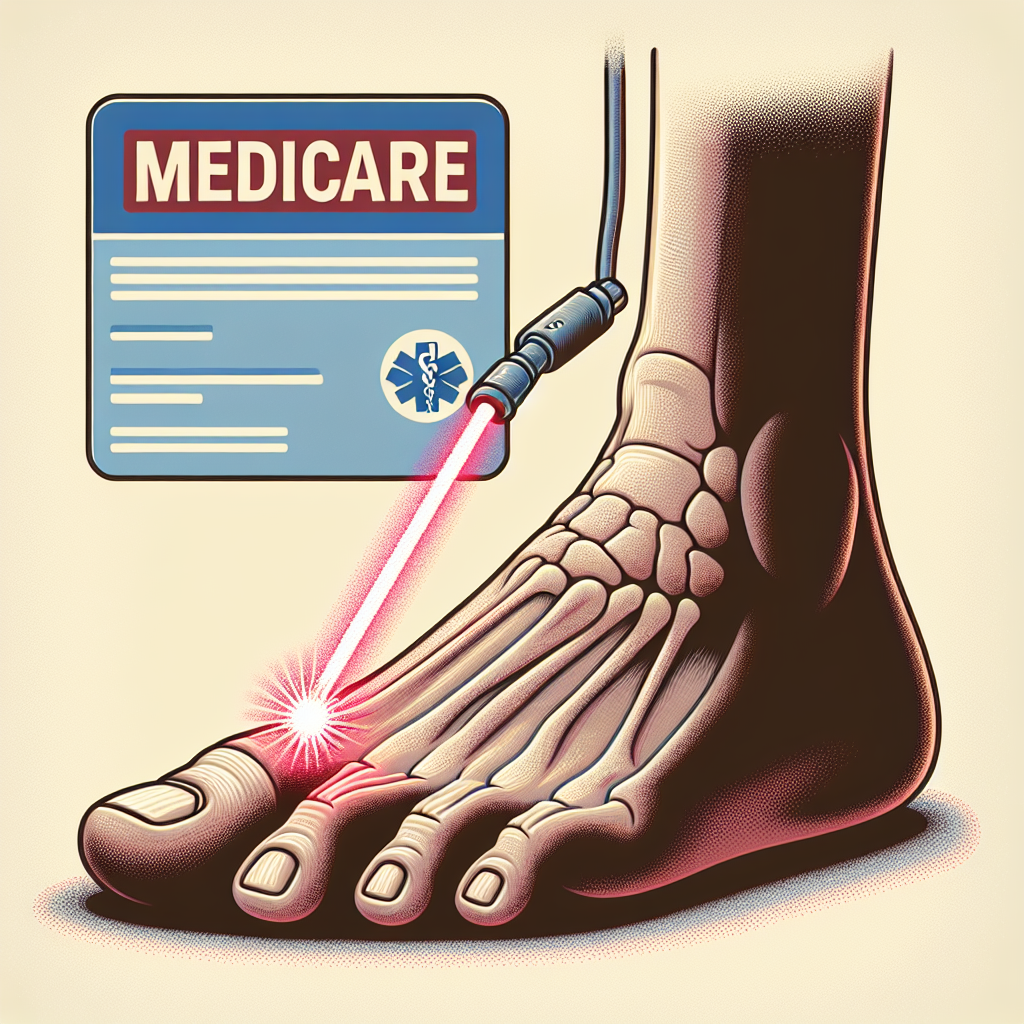Filed under Health Insurance on
Medicare Coverage for Toenail Fungus Laser Treatment

Dealing with persistent toenail fungus can be both frustrating and exasperating. Many individuals explore various treatment options, with laser therapy emerging as an advanced and often effective solution. Yet, a frequently asked question remains: Does Medicare cover toenail fungus laser treatment? In this article, we aim to explore this query thoroughly, providing you with detailed insights into the intersection of Medicare coverage and toenail fungus laser treatment.
Understanding Toenail Fungus and Its Treatment
Toenail fungus, also known as onychomycosis, is a common ailment that impacts millions worldwide. Characterized by nail discoloration, thickening, and crumbling edges, this condition can sometimes cause pain and discomfort. While topical treatments and oral medications are standard remedies, laser treatment has gained popularity due to its precision and often effective results.
What is Laser Treatment for Toenail Fungus?
Laser treatment for toenail fungus involves using a focused beam of light to penetrate the nail, directly targeting fungal infections without damaging the surrounding skin. This methodology, praised for its painless and quick approach, often shows promising results after several sessions. As such, many individuals consider this a viable alternative when traditional treatments falter.
However, the question of affordability and coverage becomes critical, especially for seniors reliant on Medicare.
Medicare Coverage: An Overview
Medicare, primarily catering to those aged 65 and older, is a government-run health insurance program in the United States. It provides coverage through various plans, each with specific stipulations and benefits encompassing hospital care, medical services, and, in some cases, prescription drugs.
Parts of Medicare
- Medicare Part A: Covers hospital care, skilled nursing facility care, and some home health services.
- Medicare Part B: Encompasses doctors' services, outpatient care, and preventive services.
- Medicare Part C (Medicare Advantage): An all-in-one alternative to Original Medicare, provided by private insurers approved by Medicare.
- Medicare Part D: Covers prescription drugs.
Does Medicare Cover Toenail Fungus Laser Treatment?
When it comes to whether Medicare covers toenail fungus laser treatment, the straightforward answer is complicated by nuances in Medicare's policies. Let's break it down:
Original Medicare
Original Medicare, consisting of Parts A and B, generally does not cover toenail fungus laser treatment. This is largely because the treatment is often classified as an elective procedure rather than medically necessary, placing it outside the purview of standard Medicare coverage.
Medicare Advantage Plans
The landscape shifts slightly with Medicare Advantage (Part C) plans. These plans, offered by private insurance companies, sometimes provide broader coverage than Original Medicare, meaning there is a possibility that certain Medicare Advantage plans may cover toenail fungus laser treatment. However, this varies significantly between providers, and it is crucial to review specific plan benefits or consult with providers directly.
Medigap Policies
Medigap, or Medicare Supplement Insurance plans, helps fill many of the cost gaps not covered by Original Medicare. However, like Original Medicare, Medigap policies generally do not extend to toenail fungus laser treatment unless deemed medically necessary, which is rare in the case of laser therapies.
How to Determine Your Coverage Options
Given the variable nature of Medicare Advantage plans, here are actionable steps to clarify your options:
- Contact Your Medicare Provider: Directly reach out to your Medicare Advantage or Medigap provider to inquire about the specifics of your plan, especially regarding laser treatments.
- Consult with Your Physician: A healthcare provider can help determine whether the severity of your condition may warrant coverage under Medicare due to exceptional medical necessity.
- Review the Annual Notice of Change: Every year, beneficiaries receive this notice, detailing changes in coverage. Reviewing this document ensures you’re aware of any updates that might impact treatment coverage.
- Explore Non-Covered Treatment Options: If Medicare doesn’t cover your treatment, consider discussing flexible payment plans or discounts with your healthcare provider.
The Future of Coverage for Toenail Fungus Treatment
With the evolution of healthcare services and technology, there could be shifts in insurance coverages, potentially affecting toenail fungus laser treatment. Ongoing research into the efficacy and cost-effectiveness of new treatments may influence whether insurance policies, including Medicare, recognize them as standard coverage options in the future.
Conclusion
The path to addressing toenail fungus through laser treatment under Medicare requires careful consideration and thorough understanding of your options. While Original Medicare typically doesn’t extend coverage to such procedures, navigating the specifics of Medicare Advantage plans can offer potential solutions. Ensure you engage in comprehensive research and dialogue with insurance providers to ascertain the most up-to-date and relevant information about your specific coverage.
Meanwhile, as healthcare continues to advance, staying informed about future changes can position you advantageously in navigating these decisions efficiently. Ultimately, informed patients are empowered patients, capable of making the best choices for their wellness journey.





